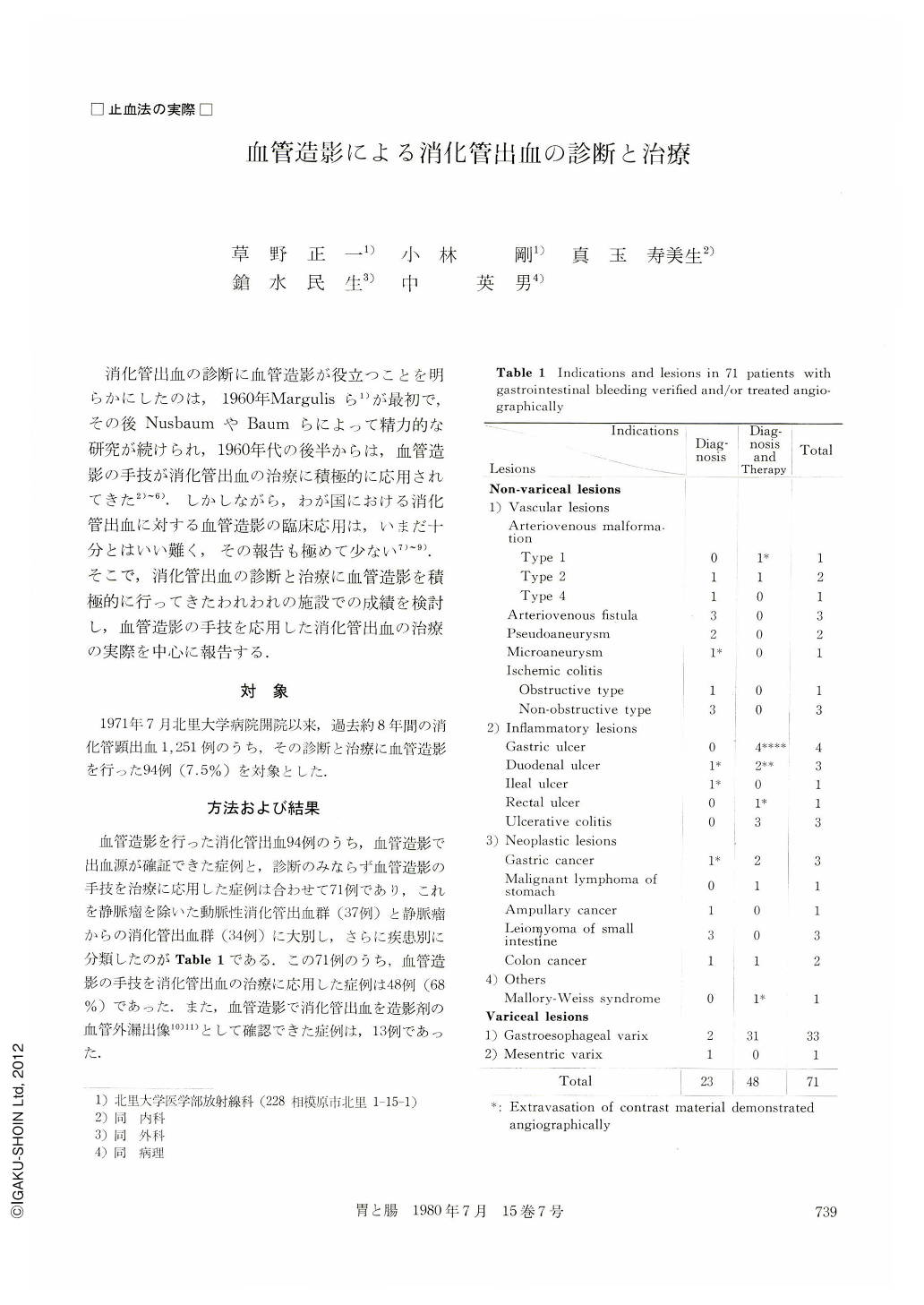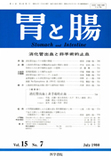Japanese
English
- 有料閲覧
- Abstract 文献概要
- 1ページ目 Look Inside
消化管出血の診断に血管造影が役立つことを明らかにしたのは,1960年Margulisら1)が最初で,その後NusbaumやBaumらによって精力的な研究が続けられ,1960年代の後半からは,血管造影の手技が消化管出血の治療に積極的に応用されてきた2)~6).しかしながら,わが国における消化管出血に対する血管造影の臨床応用は,いまだ十分とはいい難く,その報告も極めて少ない7)~9).そこで,消化管出血の診断と治療に血管造影を積極的に行ってきたわれわれの施設での成績を検討し,血管造影の手技を応用した消化管出血の治療の実際を中心に報告する.
During the eight-year period from 1971 to 1979 at Kitasato University Hospital, angiography was performed in 94 out of 1,251 patients with gastrointestinal bleeding. 74 patients with angiographically veriied and/or treated gastrointestinal bleeding were analysed and discussed.
Angiography has actually played an essential role in identifying sites of bleeding caused by vascular lesions, such as arteriovenous malformations, arteriovenous fistulas, aneurysms, and so on. Careful angiographic evaluation of arteriovenous malformations in the gastrointestinal tract may be of utmost importance for the diagnosis of the patients with gastrointestinal hemorrhage which is unexplainable despite repeated barium examination and endoscopy.
Angiographic methods were also applied in the management of the patients with massive hemorrhage. 33 percent of the patients with active bleeding were uncontrolled with vasopressin infusion, although it was generally useful for control of bleeding from esophageal varices, stress ulcers, Mallory-Weiss syndrome, and so on. Transcatheter embolization with cyanoacrylate (Alonalpha A) was subsequently performed in these patients with active bleeding with vasopressin infusion or poor-risk patients not suitable for surgical therapy. Control of arterial bleeding from the gastrointestinal tract was achieved in 6 of 8 patients. Embolization of gastric veins resulted in temporary control of gastroesophageal variceal bleeding in 4 of 7 patients. At present, good judgement regarding surgical intervention following treatment by means of the angiographic methods is most important in the management of patients with massive hemorrhage.
Some of the methods and complication of both vasopressin infusion and transcatheter embolization are disccussed and several examples are demonstrated.

Copyright © 1980, Igaku-Shoin Ltd. All rights reserved.


